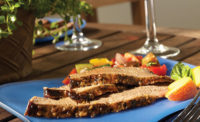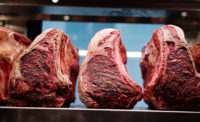I recently read a piece by a marketing expert about how a story is more effective than statistics in selling a product. I couldn’t agree more. To expand on that thought, it’s important for the story to be backed by a solid product that is equal to or exceeds the perceived value for the customer. If you have both of those things in mind, sales are set up for success. But how do we get to that point?
For many years I worked for a branded beef company that has a great product as well as an amazing story to tell. The product has a lot of scientific data to support what a great eating experience it will be to the end user; however, if only scientific data were presented, the product would likely not have achieved the success it has. What really was amazing was the combination of the telling of the story of the product quality, while linking it to the story of the farmers and ranchers producing the product. This grabbed the interest of the customer and eventually led them to try the product. That company continues to use this amazing model to successfully market high-quality beef around the world.
Another example of a great story and a great product is a company that produces another one of my favorite things in the world: beer. More than a decade ago, I was newly introduced to a beer at a grocery store in the Pacific Northwest. This unique amber ale was full of flavor, refreshing and different from most of the other cerveza choices. As time went on, I became more accustomed to the company and their amazing story about how they went from basement brewing to one of the largest craft beer businesses in the United States. Their quality product was not the cheapest on the shelf, but the consistency and flavor definitely created a following of fans over the years. To top it off, their story continues as a large proponent of employee recognition and ownership, environmental stewardship and community outreach. This is a winning example of a great story and a product that exceeds the value expectations of the end user.
Value is a dynamic idea. A lot of times in the meat business we synonymously use the word “value” with “inexpensive.” Value is the worth of something, and that can be relative to the purchaser. As long as the product has the quality of what the purchaser perceives the price should dictate, then the product achieves its value. But value goes beyond the product itself. The story and service that accompanies the product can add to the value of an item and thereby increasing the perceived value. An example that is relatable to just about anyone is the restaurant experience. A steak in a restaurant is likely similar to one that can be purchased at a grocery store, albeit at a much lower cost per unit. So holding the cut itself constant, what other variables might increase the value of the end product? How about a cool look and theme to the building? Maybe a short story the wait staff can tell about the chef and his or her culinary history? What about the story of the meat itself and what brand might be associated with it (and why the restaurant chose to serve this to their honored guests)? These additions can greatly enhance the overall experience and keep the customer coming back. The meat of course has to be of good value to begin with. The experience and story is the enhancement to over-deliver on the customer expectations.
Probably the most important rule of thumb when connecting a story to a product is to make sure it’s true. First off, a true story is easier to tell than a fictitious one. I encourage organizations I consult to tell their story. Customers are increasingly interested in the people (and animals) behind the product. Food is an extremely emotional topic. If we can make a human connection to food that is relatable and connect that with a product that meets the dollar value expectation, it is likely to be a promising business venture.
For decades, we in the animal agriculture community have led with science and statistics of how great our products are. We’re quick to point out nutrition facts, satisfaction and satiety ratings and cost-saving efficiencies. But at the same time, we have not fully told our story of how we truly care for the environment and the animals we manage. More animal agriculture companies and organizations are beginning to connect those dots. Even if a company is a value-added processor and quite removed from the live-animal production, there’s still a great story to tell about the company, the product and the people who make it all work. Consumers are hungry for knowledge (pun intended). Sometimes that knowledge is simply learning the story behind the great product they are about to enjoy.
I’m proud of the story of animal agriculture. I’m glad that my medium to tell that story, meat (predominantly beef), is a food product that continues to gain traction on the global scale and has a colorful and interesting history to help tell the tale. What’s your story? NP









